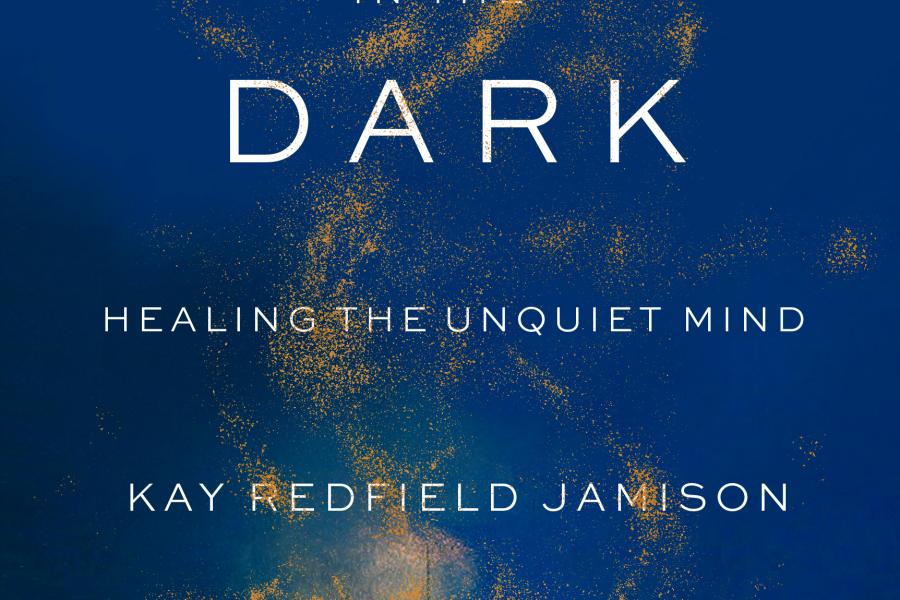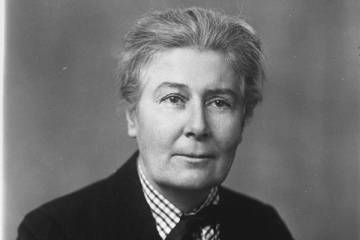Kay Redfield Jamison's eloquent writing on mental illness has bridged art and medicine, the personal and the professional. An expert on bipolar disorder, Jamison revealed her own struggles with the illness in the 1995 memoir An Unquiet Mind. She dissected the relationship between mania and creativity in Touched With Fire and the 2018 Pulitzer Prize finalist Robert Lowell: Setting the River on Fire. She explored the distinctions between grief and depression in another memoir, Nothing Was the Same, about losing a husband to cancer.
"I have been interested in psychological suffering and different ways that society and individuals deal with it—good, bad, and indifferent," says the professor of psychiatry and co-director of the Johns Hopkins Mood Disorders Center. "I have a lot of respect for psychotherapy when it's done really well and dismay, like many, when it's done badly."
Image caption: Kay Redfield Jamison
Image credit: Johns Hopkins Medical Institutions
Her latest work, Fires in the Dark: Healing the Unquiet Mind (Knopf, 2023), is not a conventional history of psychotherapy. Instead, Jamison draws on an idiosyncratic catalog of personal obsessions to illuminate the broader topic of psychological healing and healers. The book represents "an archipelago of thoughts, experiences and images," Jamison writes in its pages.
The title is lifted from a poem by World War I veteran Siegfried Sassoon, who had a productive and mutually admiring relationship with the anthropologist, psychologist, physician, and British Army captain W.H.R. Rivers. Rivers treated the poet when he was consigned to a mental hospital for the anti-war views he developed in the trenches. Feeling a responsibility to the men in his command, Sassoon later returned to the battlefield, where he was wounded but, unlike fellow poet Wilfred Owen, survived the war.
"Sassoon would say that Rivers gave him a place to be known," Jamison says. "From the first time he met him, Rivers understood him better than anyone had." Their relationship models the "therapeutic alliance" that Jamison and other researchers consider the most important component of successful psychotherapy.
The "free-flowing" (in Jamison's words), nonlinear narrative of Fires in the Dark zigzags between past and present, covering a dizzying array of topics: Neanderthal mourning rituals, Greek medicine, the Arthurian legend, the singer Paul Robeson's tumultuous and multifaceted career, and Jamison's own experience of disease and treatment. "The history of healing, like anything profound, is not particularly linear," Jamison explains.
Assuming "that psychological suffering goes back to the earliest times of our species," Jamison says she was interested in the origins of psychotherapy in religion and magic. She underlines that, in addition to medicine and therapy, healing may require the support of family and friends, books, music, work, and other activities that imbue life with meaning.
Though Fires in the Dark is wide-ranging, it is also, at times, Hopkins-centric. Jamison devotes her first chapter, "The Shadow of a Great Rock," to William Osler, one of the four founding physicians of Johns Hopkins Hospital. Though Osler wasn't a psychiatrist, his gentle, confident, and comforting bedside manner had "a very therapeutic effect on people," she says. "And he came to know grief so profoundly because of the death of his son [Edward Revere Osler] in the First World War." In the aftermath of that death, books and especially the poetry of Walt Whitman provided some solace, Jamison writes.
Jamison says she also "got off on a tangent about nurses" who chronicled their World War I experiences. Among them was Hopkins' Ellen La Motte, who authored what Jamison calls "a very short, very bitter, but beautifully written memoir" about her wartime service in France.
"One of the major themes of the book is accompaniment—[the idea] that psychotherapy is accompanying someone on a very difficult journey," Jamison says. "These nurses did that in a very prescribed way. From the bedside to the operating room to the body bags, they stayed with people."
Jamison devotes considerable attention to the "astonishing" career of Paul Robeson, the actor, singer, athlete, lawyer, polyglot, and civil rights activist whose life was clouded by segregation and harassment by the Cold War–era House Un-American Activities Committee. Robeson also endured repeated hospitalizations and treatments for what was then known as manic-depressive illness.
Also see
"Wherever he saw suffering, he bled," Jamison says. "Because of his political beliefs and unwillingness to bend to a completely tyrannical government, he doesn't get the kind of recognition that he probably should."
While researching the book, Jamison says she was "struck by a lack of exemplars in people's lives," an absence that the heroes of literature could potentially fill.
"One of the things that psychotherapy can do is make people find courage to deal with adversity. Psychotherapy, at its best, helps you expand your life and your mind. It doesn't just bring you back to where you were, although that's great—I mean, nobody's going to complain about that," she says. "But in an ideal world, it would make you open to other experiences and other ways of dealing with things."
Though Fires in the Dark is not a memoir, the book is, in part, autobiographical in its emphasis on the literature, music, and role models that have been most meaningful to Jamison. She hopes that meaning is generalizable to her readers: "It's saying, 'Bring in the things you love in life. Build an island that is of your own devising. Make it full of things that give you sustenance.'"
Posted in Health, Arts+Culture, Science+Technology
Tagged psychiatry, author









